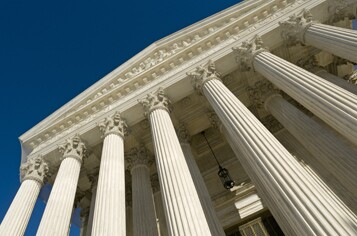
Meanwhile, scores of employers increased 401(k) matches, implemented student loan benefits, beefed up paid leave policies and made other changes to their benefits packages — both in response to savings from the Trump administration’s tax overhaul law and in a bid to keep and recruit talent.
Here are some of the biggest benefits moments of the year.

January: Amazon, Berkshire Hathaway and JPMorgan Chase announce new healthcare venture

February: Tax reform spurs companies to make big benefits changes

February: Apple announces plans to open health clinics for its employees

March: Court overturns fiduciary rule

April: Opioid treatment costs sound warning bells for employers
Workers covered through employer health insurance received $2.6 billion worth of treatment for opioid addiction and overdoses in 2016 -- an eightfold increase from $273 million in 2004 — finds a new report published by the Kaiser Family Foundation. Some $2.3 billion was covered by insurance, although patients doled out $335 million. Those startling figures are the latest to sound warning bells for employers, spurring them to consider a number of strategies, including educating employees about opioid misuse, reviewing their programs and policies to better align with the collective opioid agenda and engaging with their health plans and PBMs to ensure they do their part.

May: 401(k) participants saving more than ever

June: Employers zero in on paid parental leave

June: Fiduciary rule dies

June: Amazon, Berkshire Hathaway and JPMorgan name Atul Gawande as head of company

July: NBGH, employers team up to tackle employee engagement in benefits

July: House passes bills expanding health savings accounts

August: IRS clears way for student loan benefit tied to 401(k)

September: The Benefits Professional of the Year is…
Benefits Leadership in Healthcare:
Benefits Leadership in Retirement:
Judges’ Choice:

October: DOL proposes rule easing multiple employer plan restrictions

November: Major employers join forces to move the needle on paid leave
The National Business Group on Health announced its collaboration with dozens of large U.S. employers in the launch of the “Leave Optimization Forum,” an initiative to “help employers enhance leave management programs to better meet the needs of a diverse and changing workforce.” Members include Amazon, Aon, Cign2a, Darden, Dell, Facebook, General Electric, General Mills, PepsiCo, Prudential, Unum and Willis Towers Watson.

November: CVS Health closes deal to buy Aetna






